Dr Clare Rider, Archivist and Chapter Librarian, writes about the collections at the Chapter Library, St George’s Chapel.
The College of St George, comprising St George’s Chapel and surrounding buildings, occupies the lower ward of Windsor Castle. Founded in 1348 by King Edward III as a collegiate religious institution, its purpose was to act as the spiritual counterpart of the Order of the Garter, the oldest and most prestigious order of chivalry in Britain. The library has been an integral part of the life of the College from its foundation, serving the Dean and Canons who make up the Windsor Chapter.
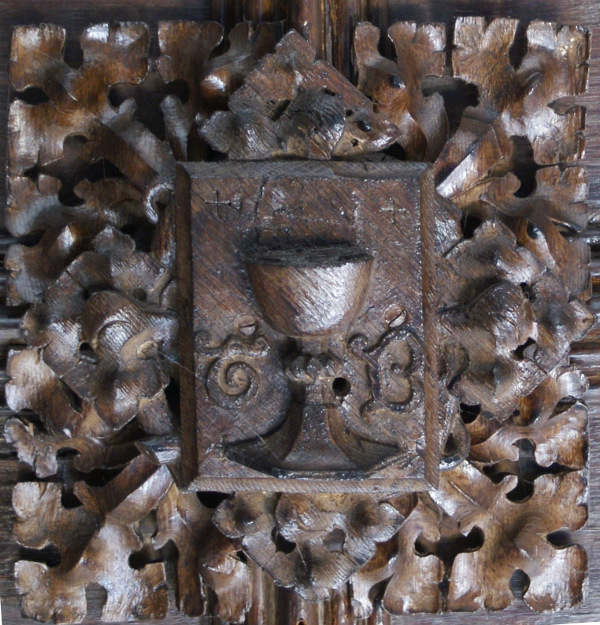
An introduction to the medieval library and a survey of the documentary sources for its study are the subject of a new St George’s Chapel monograph by Dr James Willoughby, published at the end of 2014. Dr Willoughby describes how the first books were kept chained to desks in the Chapel. On the orders of Edward IV, who donated a number of books to the College, a separate library was built in the 1480s above the Dean’s Cloister to house the growing number of volumes. Despite the loss of seventy of its manuscript books in 1612, donated to Sir Thomas Bodley for his new library in Oxford where they continue to reside, the library’s holdings continued to expand.

In 1692 the books were removed to the Vicars’ Hall, where they remained for three centuries as a working library, augmented by later acquisitions until, in 1947, the newly formed Library Committee decided to convert the Chapter Library into a ‘museum–library’, arranging for the sale of its post-1692 publications. A few eighteenth and nineteenth century volumes escaped the cull and a small number of additions have been made to the rare-book collection since then. However, the vast majority of the library’s collection of approximately 6,000 rare-books, dates from the sixteenth and seventeenth centuries, forming a splendid sequence from the main English and
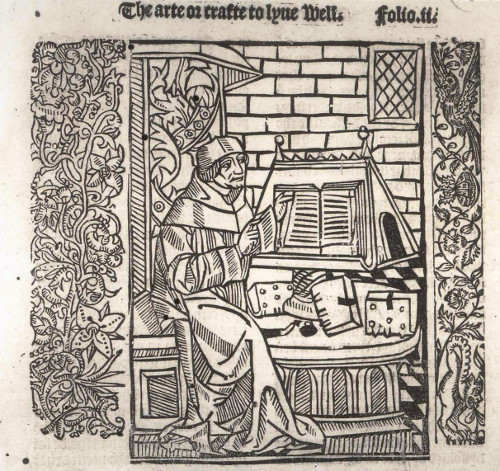
and European printing presses of the time. The volumes cover a wide range of subjects: theology, ecclesiastical and political history, classics, geography, topography, navigation, bibliography, mathematics and medicine. The nine incunables in the collection include a fine edition of Caxton’s The mirrour of the world (1481), and a beautifully illustrated copy of The crafte to lyve well and to dye well printed by Wynkyn de Worde (1505).
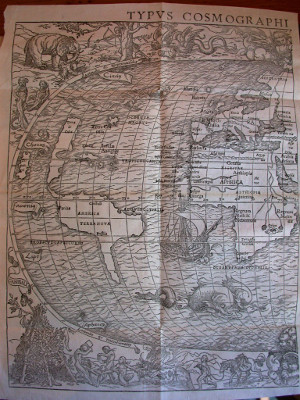
Amongst the most interesting of the non-theological holdings is the rich collection of sixteenth and seventeenth century topographical and navigational works and atlases including all four parts of Sir Robert Dudley’s Dell’arcano del mare (1606), a fine edition of John Speed’s The theatre of the empire of Great-Britain (1676), Mercator’s Atlas siue Cosmographicae (1606), Jan Blaeu’s Atlas maior (1662) and Moses Pitt’s The English atlas (1680-1683). One of the earliest published world maps, Typus Cosmographicus Universali by Sebastian Munster (1488-1552), is included (in two parts) in the 1555 edition of Simon Grynaeus’ Nouus orbis regionum which also forms part of this collection. With its lively depictions of cannibals, winged serpents, elephants, and monsters, and its curious topographical interpretation of North America (labelled as the land of Cuba), it makes a fascinating study.
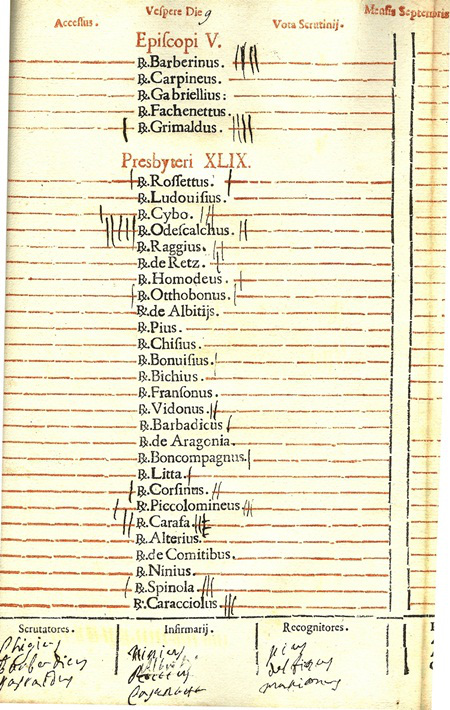
An intriguing eighteenth century addition to the Chapter Library was the donation by Canon Walter Harte of a bound volume entitled ‘The Scrutiny at the Conclave held at Rome in the year 1676, when Cardinal Odescalchi was chosen Pope (Innocent XI)’. The volume, which Canon Harte purchased in Italy, contains daily scrutiny papers (printed lists of cardinals with manuscript annotations recording number of votes for each on a daily basis) from the Papal Conclave held in the Vatican from 4 September to 21 September 1676, ending with an engraving of Odescalchi in his new role as Pope. The Apostolic Constitution governing papal elections requires all notes as well as ballot papers to be burnt in order to maintain secrecy. These papers, presumably smuggled out of the Vatican for the antiquarian market in Rome, offer a unique insight into an important moment in the Roman Catholic Church.
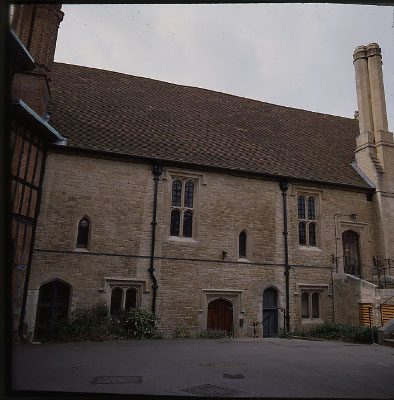
In 1999, the rare-books moved down into the Vicars’ Hall Undercroft, which had been converted into an archives and library repository with the assistance of a Heritage Lottery Fund grant. The library collections are open to the public for research without charge (by prior appointment) and the Archives and Chapter Library welcomes group visits, donations from which contribute to the library conservation fund. The introduction of a successful Adopt-a-Book scheme in 1998, together with charitable grants and donations, has enabled the professional restoration of over six hundred rare-books since 1998. We are delighted that the library’s catalogue is now included in Copac which has assisted in opening up the collection to a wider audience.
You can see the full St George’s Chapel collection here on Copac. Search within the collection to view details of individual items.
For more information about the Archives and Chapter Library, please visit our website: http://www.stgeorges-windsor.org/archives.html
Published catalogues and guides to the Chapter Library
J. Callard, A Catalogue of Printed Books (Pre-1751) in the Library of St George’s Chapel Windsor Castle Historical Monographs relating to St George’s Chapel, Windsor Castle no.15 (Windsor, 1976)
J. Willoughby, The Medieval Library of St George’s Chapel, Windsor Castle: Documentary Sources, Historical Monographs relating to St George’s Chapel, Windsor Castle no.19 (Windsor, 2014)
All images copyrigr.ht St George’s Chapel, Windsor Castle, and reproduced with the kind permission of the copyright holder.
Categories

